As businesses expand across borders, having a website that speaks your customers’ language becomes a key advantage. Managing content in multiple languages can often be complex, but with Odoo 18, the process is streamlined and user-friendly.
Odoo Website module introduces improved tools for handling translations, allowing businesses to create a seamless multilingual experience. Whether you're updating product details, blog posts, or page layouts, Odoo 18 makes it easier to manage and display content in different languages, all from a single, integrated platform.
In this blog, we’ll walk through how Odoo 18 simplifies language management for your website and helps you connect better with a global audience.
When you run a website, your visitors may come from many places, such as India, the US, Europe, the Middle East, or anywhere in the world. Not everyone understands English. By showing your content in other languages like Hindi, Arabic, French, or Spanish, you make it easier for them to understand and trust your business. The main advantages of language management in Odoo 18 are,
- Makes our website more welcoming
- Helps customers understand your products or services better
- Increases your chances of getting more sales or inquiries
To manage different languages in the Odoo 18 website module, move to the configuration settings of the Website application.

Under the Website Info section, there are different options like Domain, Languages, Website Name, Company, and Favicon.
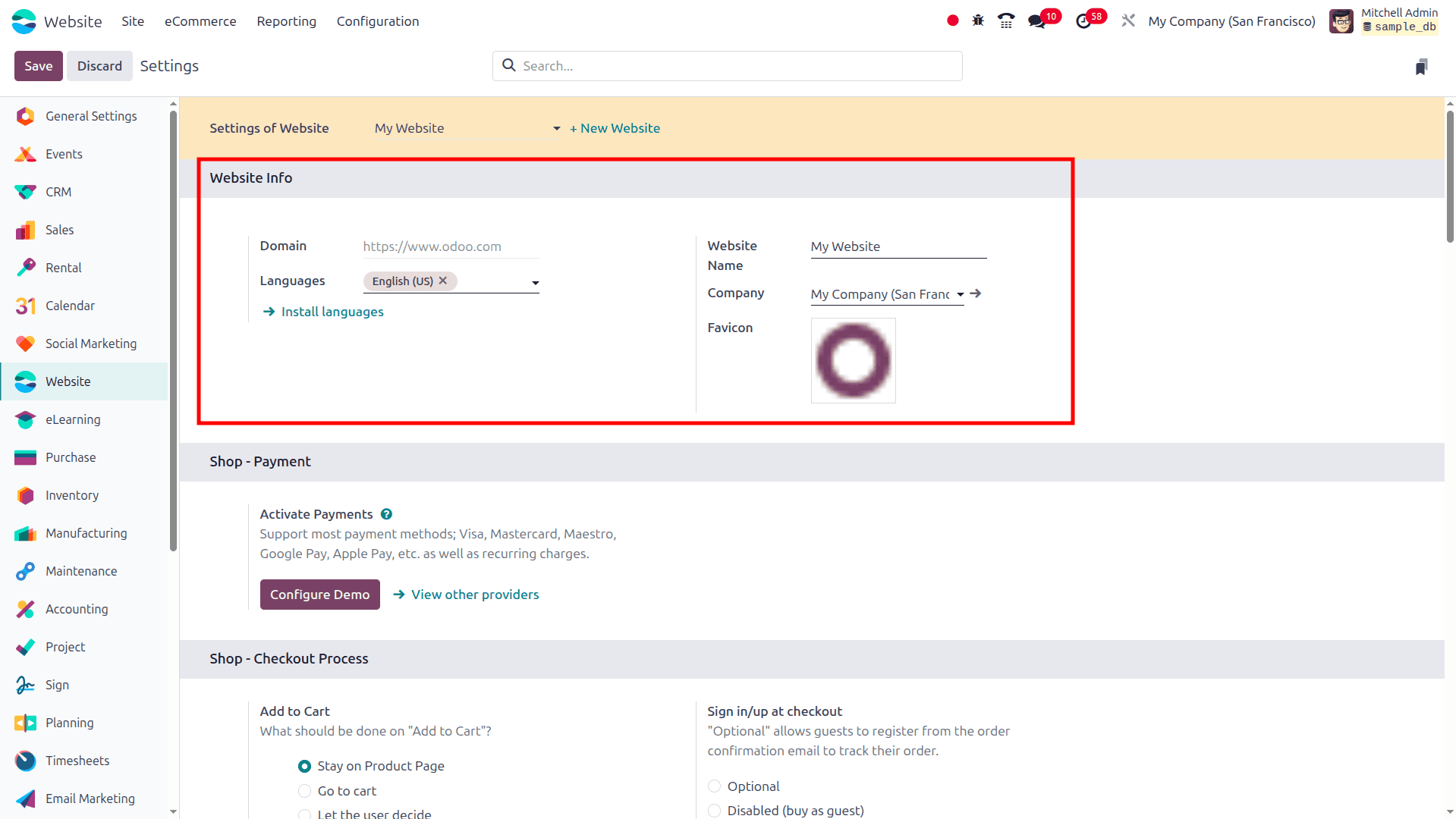
- Domine: We can add the domain of the website here, which defines which records are available to choose based on certain conditions
- Languages: There, we can add multiple languages, which are available on our website
- Website name: We can mention the name of our website there
- Company: We can mention the company name to which our website belongs
- favicon: Favicon is a small icon that appears in the browser tab, which allows us to upload and set this icon for your website.
- In the Language field, multiple languages can be added; however, one language will always be set as the current language in which the website content is displayed. Under the languages field, there is an option to install different languages. On clicking the ‘Install languages’ option, a pop-up window will be displayed.
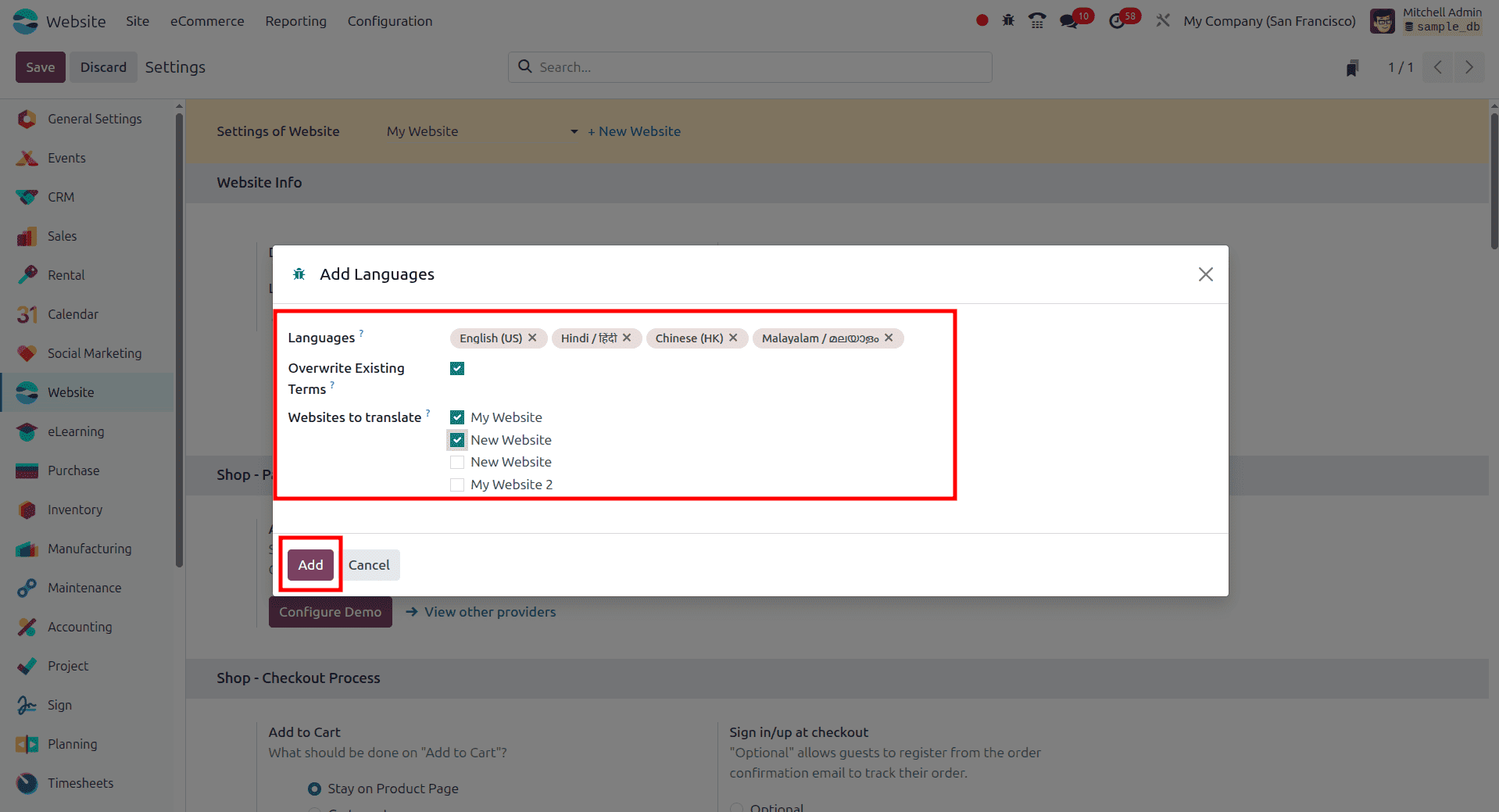
Odoo 18 supports over 100 languages, and we can search for and select the one we need. Then click the Add button to add these languages to your website.
- Languages: add multiple languages that we need to use on our website
- Overwrite existing terms: if this checkbox is checked
- Website to Translate: Choose those websites that you need to publish these languages by enabling the checkbox.
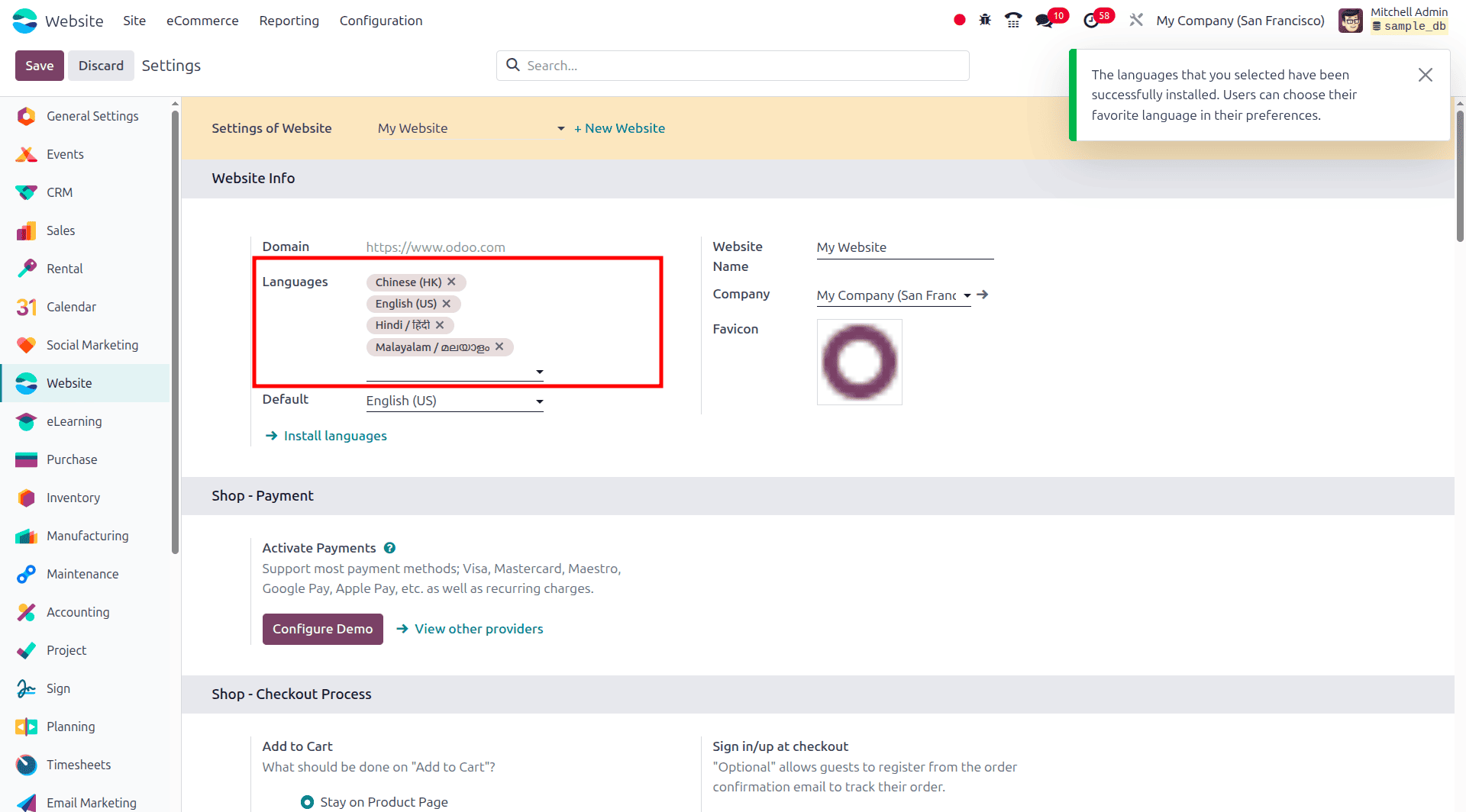
After adding the languages, check whether all the languages that you installed are added in the Website Info section of the configuration settings. Then click the save button to save the changes that you made.
How to Translate the Website Content
Now that the new language is added, it’s time to translate your website content. When we move to the home page of the website. Besides the user's profile, the language of the website is visible. There will be a drop-down list of the languages that we have installed. So, on clicking the language, all the languages that are installed will be shown.
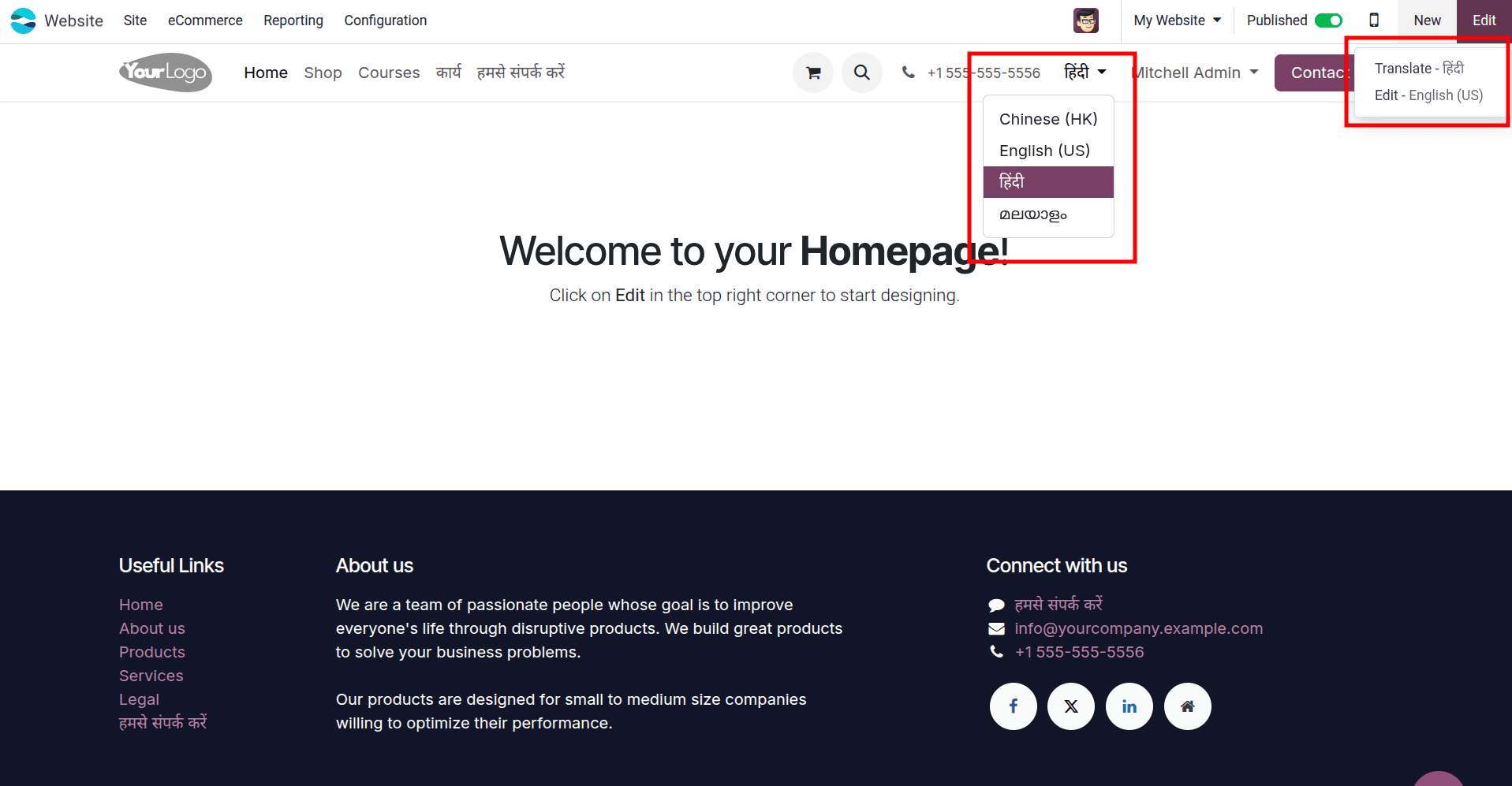
Select the language that you need to translate and then click the Edit button. Then, two options will be available: Translate and Edit. After clicking the Translate button, we can select the text to be translated and then click the Translate option located below the Customize tab on the right-hand side of the website.
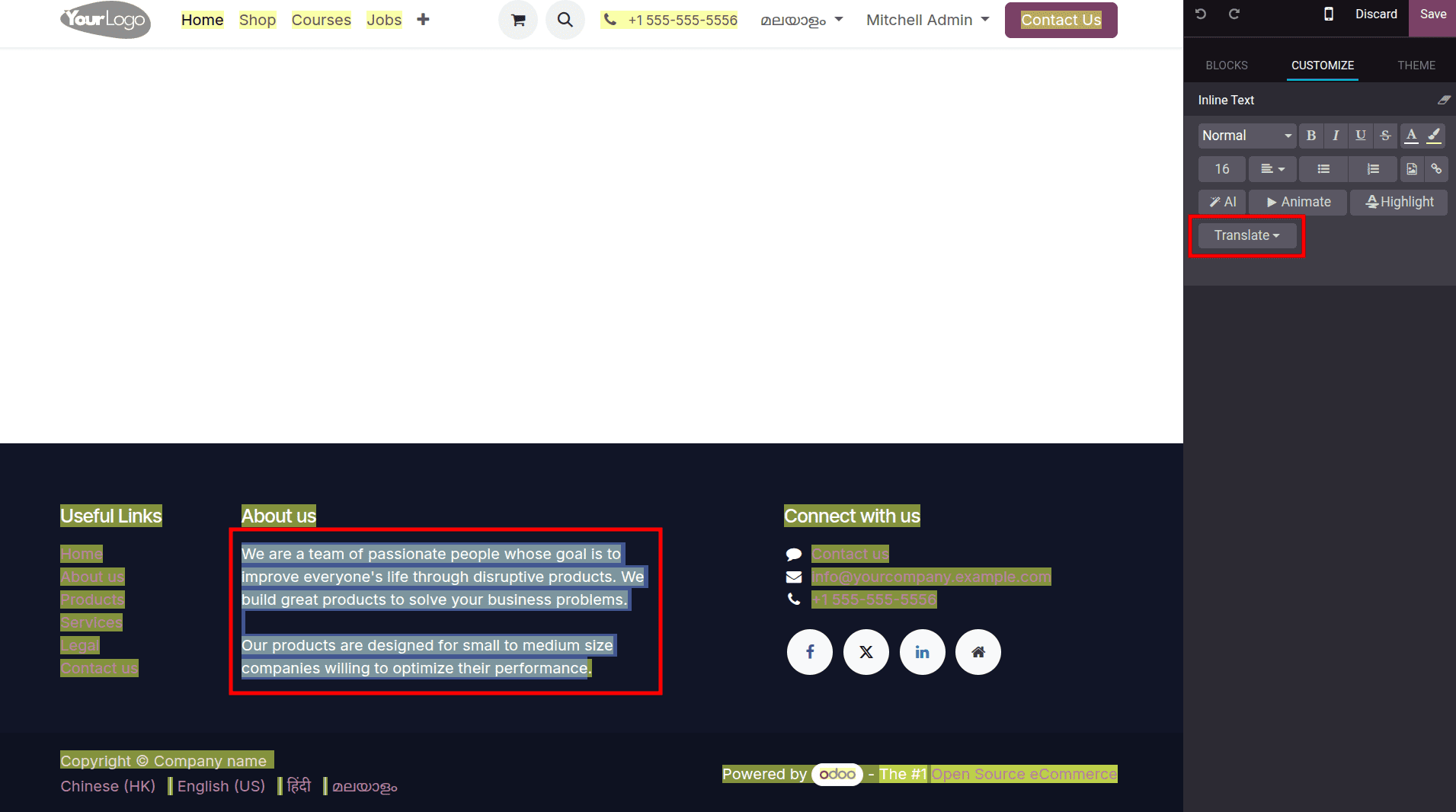
Then Odoo will translate the text using AI, and once it is translated, the translated contents will be shown in the pop-up window. If we need to insert it into our website, click the insert button.
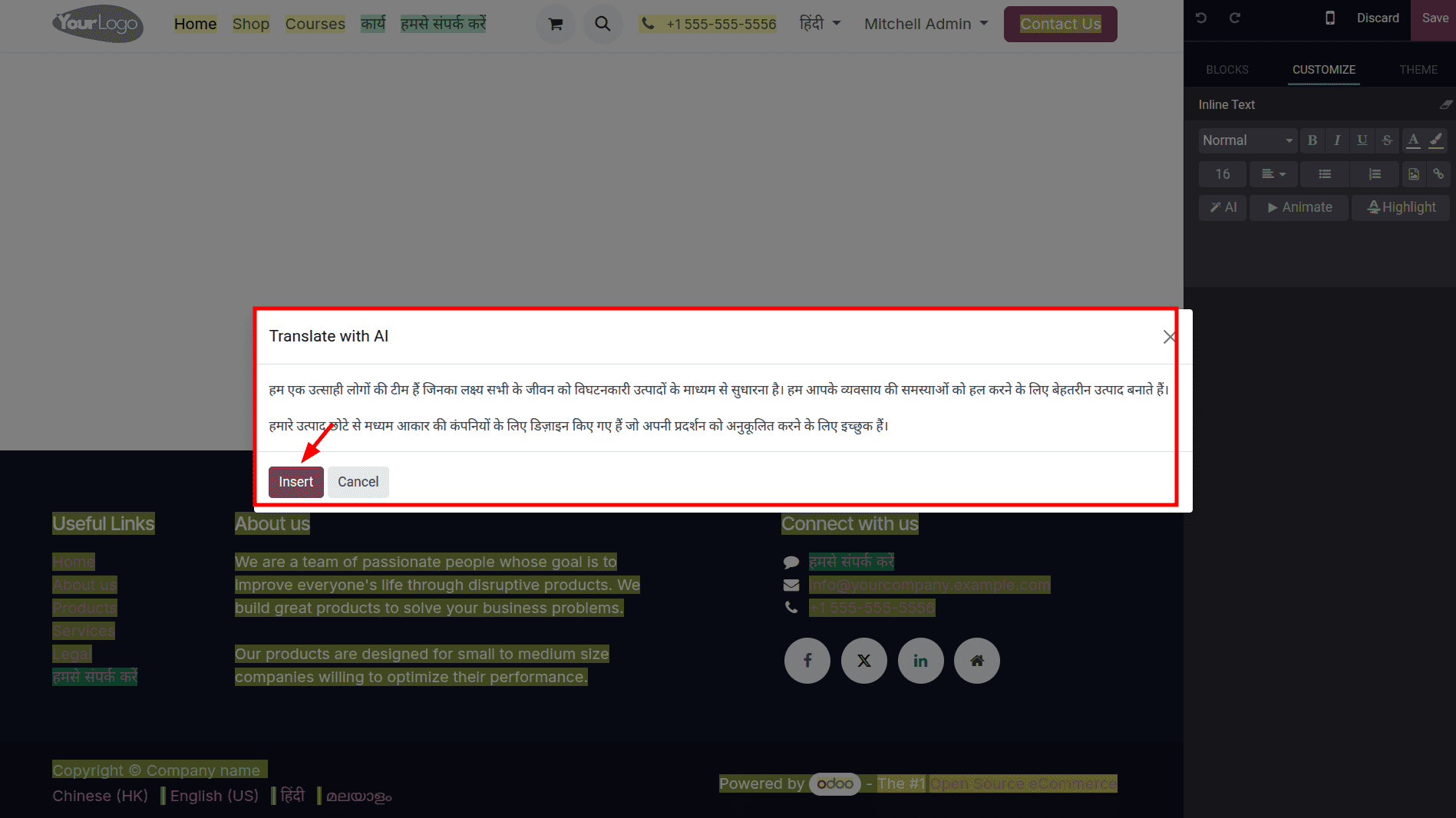
Once we insert this content into our website and save it, that content will be shown in the translated language on the website.

Now, when someone changes the language on the website, they’ll see the content in their selected language.
Odoo automatically shows a language selector on the website (usually at the top or bottom). When a portal user who is using another language has entered our website, and in some instances, they decide to get the website contents in their language, they get the content in their own language if we have already translated it. To switch the content at the bottom of the website, all the installed languages will be visible. The customer can click that language.
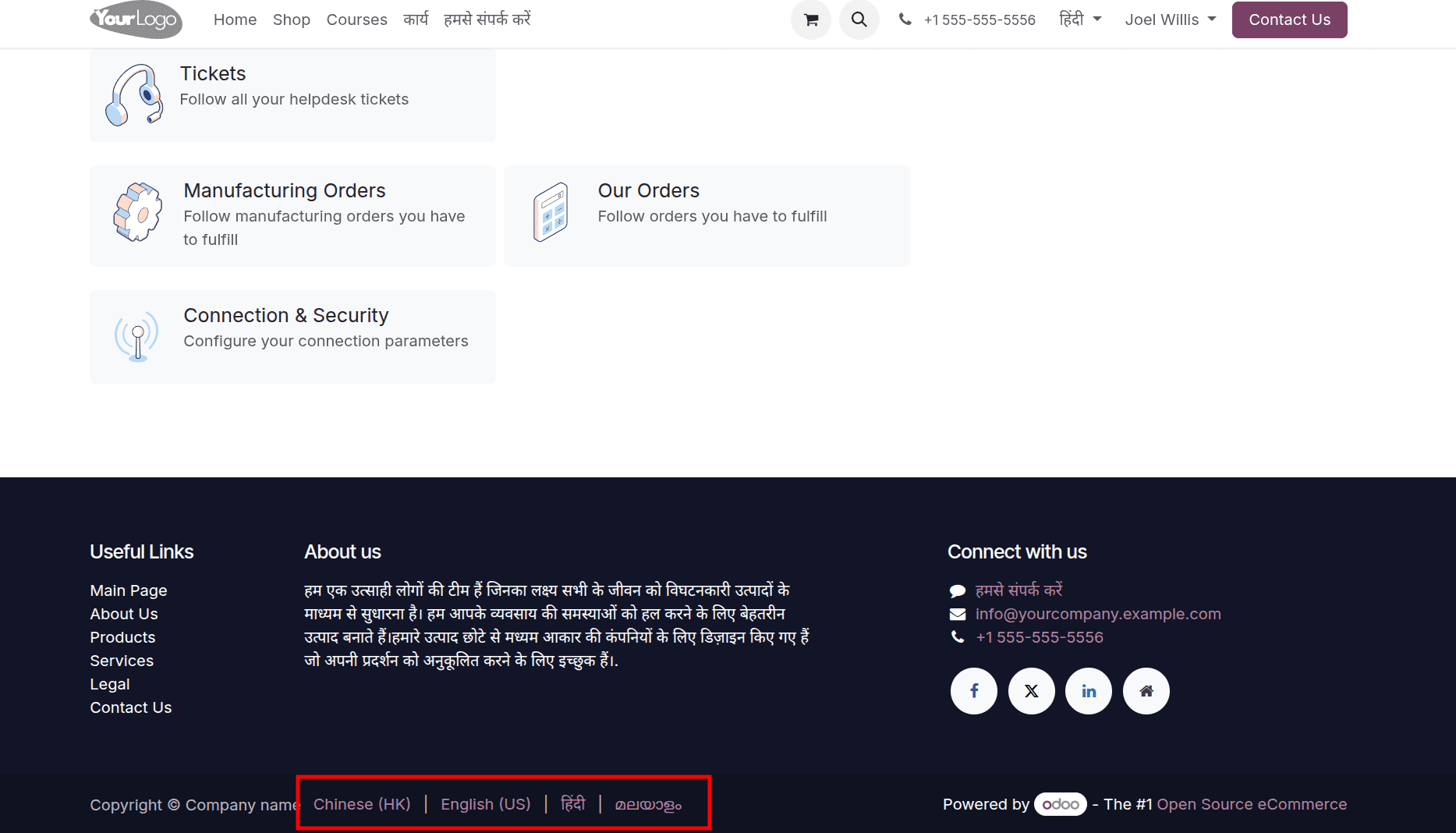
From there, the customer can select the language, and the contents will switch automatically to the selected language.
Odoo 18 makes language management very simple. You don’t need to be a tech expert or create many websites. With just a few clicks, you can:
- Add new languages
- Translate your content
- Let visitors choose their preferred language
- Give a better experience to users from around the world
This helps your business grow by making your website friendly, professional, and easy to understand for everyone, no matter where they’re from. So, whether you are a small business owner or managing a big company, Odoo 18 gives you all the tools to run a successful multilingual website with ease.
To read more about How to Manage the Language of a Website in Odoo 18, refer to our blog How to Manage the Language of a Website in Odoo 18